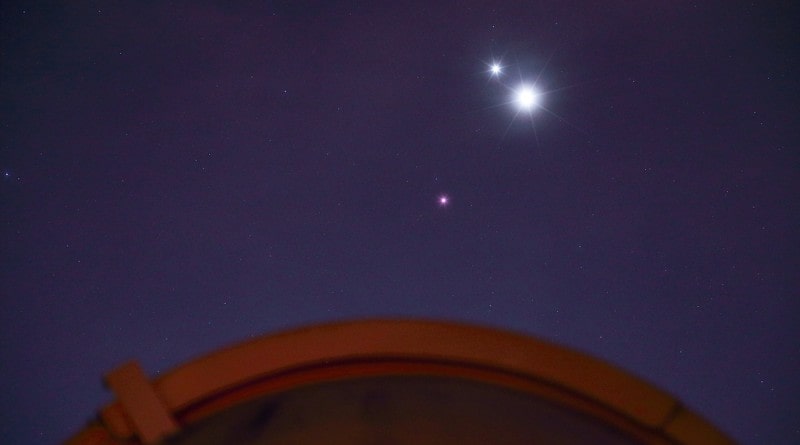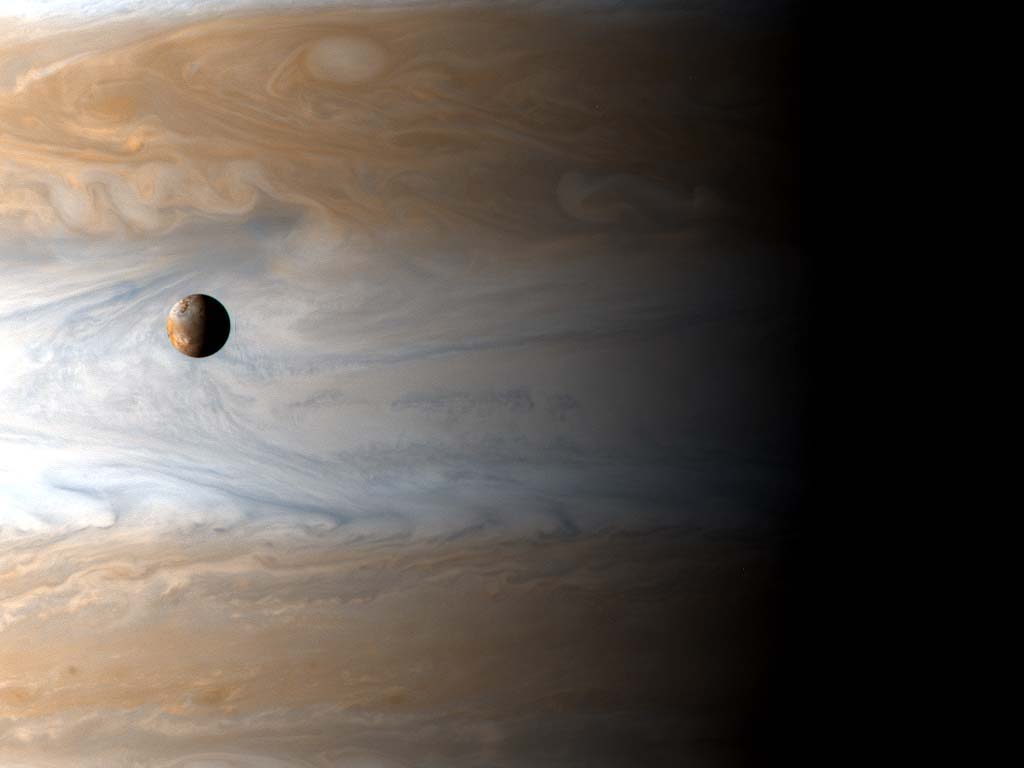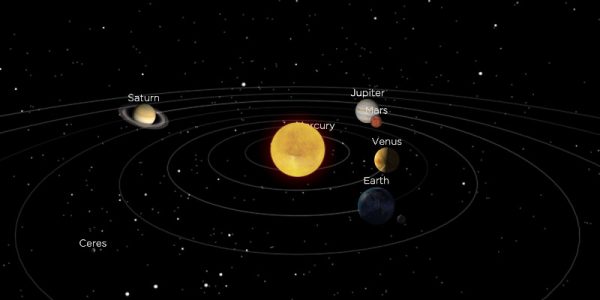Wondered what the hell are those three bright lights low in the eastern sky?
Well first off they’re not UFOs okay so you’re not going to abducted, and unfortunately they aren’t in the sky heralding you to come up to the Perth Observatory with gold, frankincense and myrrh, although we do like gold and visitors. They’re actually Jupiter, Venus, and Mars very close together in what’s called a conjunction.
They’ve been slowly approaching each other for the past several weeks and reached their closest approach on Wednesday morning on the 28th of October which was their closest meeting until the 10th of January, 2021.
Like the Jupiter/Venus Conjunction back in June, our mortal enemy the clouds decided again to make several appearances over Perth in the last couple of days and the even brought a storm with them. Don’t worry Jupiter, Venus, and Mars will still put on a great show for the coming week.
If you have binoculars get them out as the separation of the planets will be around five degrees (one degree is the width of a finger at arm’s length), which is enough to fit the planet in the field of view of a good pair, and you might even see Jupiter’s four largest moons – Io, Europa, Ganymede, and Callisto.
By the middle of November, the planets will begin to drift away, but not before the crescent Moon will pass near the three planets, putting the four objects together in the morning sky around November 6 and 7.
Now just a word of warning just in case someone says The Earth is doomed because the planets are so close. While the planets might look close together they are still very far apart. The conjunction is occurring because the Earth, Jupiter, Venus, and Mars are in the right place and the right time for the conjunction to occur.
All the planets travelling around the sun roughly follow a similar path in the night sky called the ecliptic. They follow this path but at different speeds depending on their distance from the Sun. Venus being 0.69 AU from us (1 AU, astronomical unit – the distance from Earth to the Sun), Mars being 2.2 AU away from us, and Jupiter being the furthest away from us at 6 AU.
Over time, we’ll see the planets pass each other in the sky as The Earth and the planets orbit around The Sun, some combining together for a week or so every now and then. So get up early in the morning make yourself a milo, tea, or coffee and enjoy this beautiful conjunction, I promise you won’t regret it.
Originally posted as a TweetPerth article: The Jupiter, Venus, and Mars Conjunction








